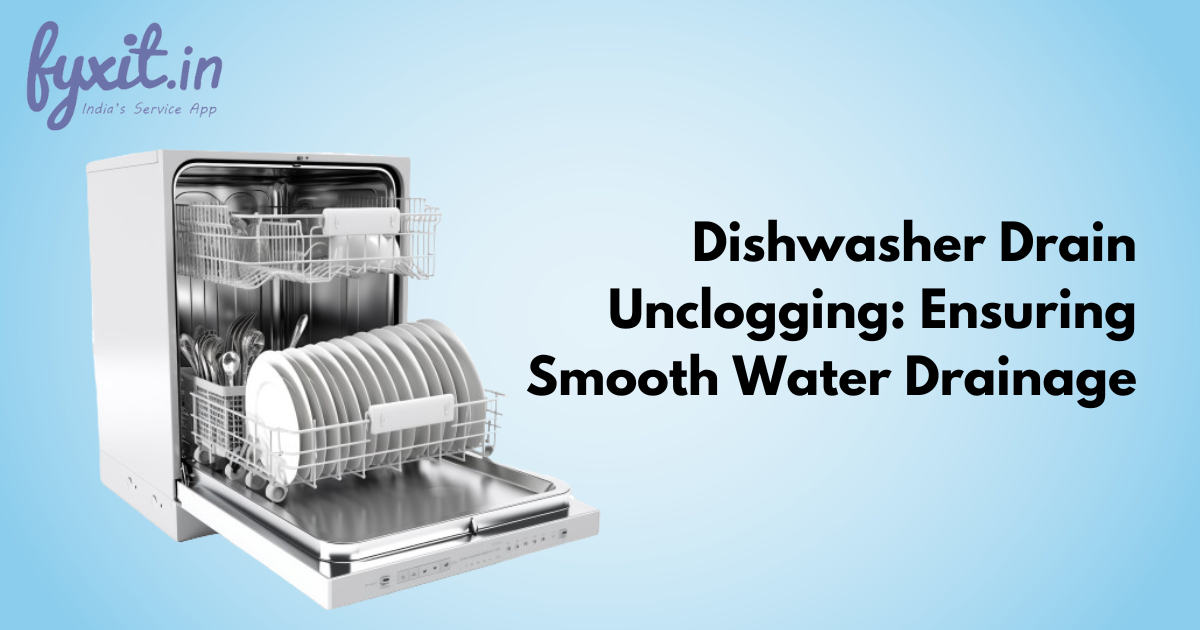Dishwashers have become indispensable appliances in modern kitchens, providing a convenient and efficient way to clean and sanitize dishes. One crucial aspect of their functionality is the ability to dry dishes effectively, and this relies on a well-functioning heating element. When your dishwasher encounters heating issues, it can lead to damp and unclean dishes, defeating the purpose of this time-saving appliance. Let’s explore common causes of dishwasher heating problems and provide a guide on repairing these issues to restore proper dish drying functions.
Table of Contents
Common Causes of Dishwasher Heating Issues
Faulty Heating Element: The heating element is a critical component responsible for raising the water temperature during the wash cycle and aiding in drying during the drying cycle. If the heating element is faulty or damaged, it can result in inadequate water heating and poor drying performance.
Thermostat Malfunction: Dishwashers are equipped with thermostats that regulate the water temperature. If the thermostat malfunctions, it can cause the dishwasher to either overheat or not reach the necessary temperature for effective dishwashing and drying.
Timer or Control Board Problems: The timer or control board in the dishwasher is responsible for managing various cycles, including heating. If these components malfunction, they can disrupt the heating cycle, leading to inefficient drying.
Water Inlet Valve Issues: Proper water heating depends on the availability of hot water. If the water inlet valve is faulty or clogged, it may not allow a sufficient amount of hot water into the dishwasher, affecting both cleaning and drying performance.
Calcium Buildup: Over time, mineral deposits and calcium buildup can accumulate on the heating element, reducing its efficiency. This buildup hinders the element’s ability to generate heat, resulting in poor drying outcomes.
Step-by-Step Guide to Repair Dishwasher Heating Issues
Check for Proper Water Temperature:
Before delving into specific dishwasher components, ensure that your household water heater is set to an appropriate temperature. Dishwashers typically require hot water with a temperature between 120°F and 140°F (49°C to 60°C) for optimal performance.
Inspect the Heating Element:
- Disconnect Power: Start by disconnecting the dishwasher from its power source. This may involve unplugging the appliance or turning off the circuit breaker.
- Access the Heating Element: Depending on your dishwasher model, the heating element may be located at the bottom of the tub or concealed beneath the dishwasher. Consult the user manual for guidance on accessing the heating element.
- Check for Visual Signs of Damage: Inspect the heating element for any visible signs of damage, such as burns or breaks. If you notice any issues, the heating element may need to be replaced.
- Test for Continuity: Use a multimeter to test the continuity of the heating element. If there is no continuity, it indicates a malfunction, and the element should be replaced.
Examine the Thermostat:
- Locate the Thermostat: The thermostat is often situated near the heating element. Access it by removing the dishwasher’s lower front panel.
- Check for Continuity: Similar to the heating element, use a multimeter to test the thermostat for continuity. If it fails this test, consider replacing the thermostat.
Inspect the Timer and Control Board:
- Access the Components: Depending on the dishwasher model, you may need to remove the control panel or front panel to access the timer and control board.
- Visual Inspection: Look for any visible signs of damage, burnt areas, or loose connections on the timer and control board. If identified, these components may need repair or replacement.
- Test Functionality: Use a multimeter to test the timer and control board for proper functionality. If they are not functioning as intended, replacement may be necessary.
Examine the Water Inlet Valve:
- Locate the Water Inlet Valve: The water inlet valve is usually found at the bottom of the dishwasher behind the kickplate.
- Check for Blockages: Inspect the water inlet valve for any blockages or debris. Clean or remove any obstructions that may be affecting water flow.
- Test Valve Functionality: Use a multimeter to test the water inlet valve for continuity. If the valve fails the test, consider replacing it to ensure proper water supply.
Address Calcium Buildup:
- Descale the Heating Element: If calcium buildup is identified on the heating element, use a descaling solution or a mixture of white vinegar and water to remove the deposits. Follow the manufacturer’s instructions for descaling.
- Run a Cleaning Cycle: Some dishwashers come with a cleaning cycle feature. Run a cleaning cycle with a dishwasher cleaner to remove mineral deposits from various components, including the heating element.
Consult Professional Assistance if Needed:
If you encounter challenges during the troubleshooting process or if you are uncomfortable dealing with electrical components, it is advisable to seek professional assistance. Professional appliance repair technicians have the expertise to diagnose and repair complex issues effectively.
Benefits of Repairing Heating Issues
- Effective Dish Drying: Repairing heating issues ensures that your dishwasher performs optimally during the drying cycle, resulting in effectively dried dishes after each wash.
- Extended Appliance Lifespan: Timely repairs contribute to the longevity of your dishwasher. Addressing heating issues promptly can prevent further damage to other components, extending the appliance’s lifespan.
- Energy Efficiency: A well-functioning heating element and associated components contribute to the overall energy efficiency of the dishwasher. Proper heating reduces the need for additional drying time, saving energy in the long run.
- Cost Savings: Repairing heating issues is often more cost-effective than purchasing a new dishwasher. By addressing specific components, you can avoid the expense of replacing the entire appliance.
- Reduced Environmental Impact: Repairing your dishwasher extends its lifespan, reducing the environmental impact of manufacturing and disposing of new appliances.
Repairing dishwasher heating issues is a practical and cost-effective approach to ensure optimal performance and dish drying functions. By systematically inspecting and addressing components such as the heating element, thermostat, timer, control board, and water inlet valve, you can restore your dishwasher’s functionality and enjoy the convenience of properly dried dishes. Regular maintenance and timely repairs not only enhance the performance of your dishwasher but also contribute to its longevity, reducing both financial and environmental impacts.



